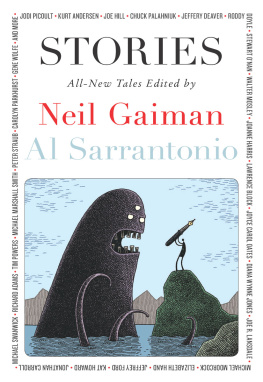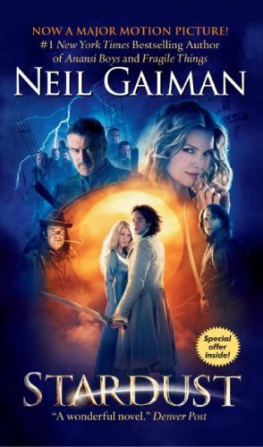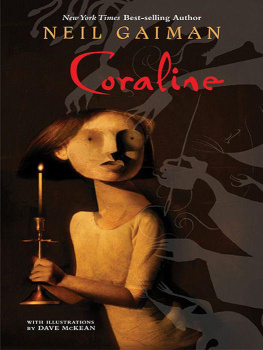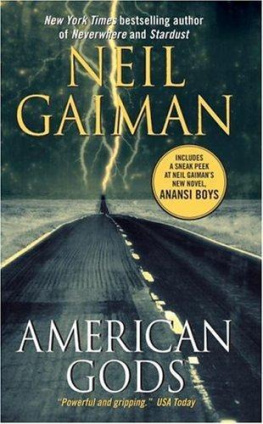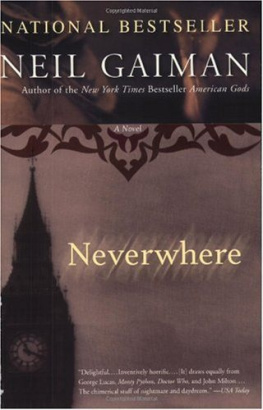Feminism in the Worlds of Neil Gaiman
Essays on the Comics, Poetry and Prose
Edited by Tara Prescott and
Aaron Drucker
McFarland & Company, Inc., Publishers
Jefferson, North Carolina, and London
LIBRARY OF CONGRESS CATALOGUING-IN-PUBLICATION DATA
Feminism in the worlds of Neil Gaiman : essays on the comics, poetry and prose / edited by Tara Prescott and Aaron Drucker.
p. cm.
Includes bibliographical references and index.
ISBN 978-0-7864-6636-8
1. Gaiman, NeilCriticism and interpretation. 2. Feminism in literature. I. Prescott, Tara 1976 II. Drucker, Aaron, 1975
PR6057.A319Z63 2012
823'.914dc23 2012035678
BRITISH LIBRARY CATALOGUING DATA ARE AVAILABLE
2012 Tara Prescott and Aaron Drucker. All rights reserved
No part of this book may be reproduced or transmitted in any form or by any means, electronic or mechanical, including photocopying or recording, or by any information storage and retrieval system, without permission in writing from the publisher.
Front cover image courtesy of Alvin Booth; background image 2012 Shutterstock
McFarland & Company, Inc., Publishers
Box 611, Jefferson, North Carolina 28640
www.mcfarlandpub.com
For Gisele and William, still dreaming...
Acknowledgments
I would like to thank Dr. Molly Ierulli, first and foremost. She shepherded my initial essay, which then formed the basis of this collection, while being supremely understanding of my horrific Latin and peculiar readings of classical mythology. Though it may seem to go without saying, Tara Prescott has been a fabulous, insightful, and ridiculously committed partner in this project, and I cant think of anyone with whom Id rather be working. I also want to thank Farah Mendlesohn, whose omniscience continues to baffle me. (Seriously, how can one person be so right about so much so often?) Conversations with Amanda Palmer and Roz Kaveney provided valuable insight into the projects potential, and I cant help but continue to admire these extraordinary women. I want to thank Ms. Pardee (my high school religion instructor) and Tori Amos, both of whom brought me to Neil Gaiman in their own ways. The latter brought my attention to the fact that one could, in fact, be hangin out with the Dream King, and the former taught the class I was cutting when I first discovered Season of Mists at the local 711, which looked like a reasonable equivalent of the religion curriculum and subsequently set the course of my career. I want to thank all of the contributors for their patience and the nonstop hurry-up-and-wait that inevitably occurs during this kind of project. To Robert G. Weiner, yes, I took your suggestion and here it is. Thanks for the encouragement. Alvin Booth, an extraordinarily talented artist and photographer, was very generous in allowing us to use the image on the cover. And lastly, Gisele and William, my wife and son, to whom this work is dedicated.
AJD
Los Angeles
I would never have imagined that Id meet Neil Gaiman and Amanda Palmer on Halloween night, on a wide stage in front of hundreds of fans, after a raucous introduction by Margaret Cho, dressed head to foot in Puritan costume. As Gaiman approached me, bathed in the reflected red glow of the LEDs embroidered to my chest, my first thought was This isnt happening. My second thought was Well, of course Im meeting Neil Gaiman while dressed as Hester Prynne. This makes total sense.
Welcome to the world of Neil Gaiman.
There are many people who helped make this project possible. I would like to thank Aaron Drucker, my partner in crime, for many long discussions about why Gaiman matters to us. I would also like to thank Seth Anderson, doctoral candidate in history at Claremont Graduate University, for offering excellent feedback at any hour of the night. Jennifer Osorio, librarian for English and American literature at UCLA, helped me to track down some of the more slippery Gaiman sources that are no longer available in print or online. I am also grateful to Sadie MacFarlane, who graciously provided PDFs of the Magian Line (anagram for Neil Gaiman) newsletter.
Finally, I would like to thank Bob Borden, owner of Fantasy Books and Games in Livermore, California. I first stumbled into Bobs comic book store when I was a teenager, unsure of what comics to read, but knowing that I wanted more than Betty and Veronica. Bob introduced me to it all: Sandman, Strangers in Paradise, Barry Ween, Watchmen, The Books of Magic, Preacher, Zero Girl, A Childs Life and Other Stories, Blankets, Fun Home. In an era where bookselling is experiencing unparalleled challenges, I feel fortunate to be able to continue to support Fantasy Books and Games. Thanks for all the great reads, Bob.
TP
Los Angeles
Finally, we all would like to thank Neil Gaiman, for all of the obvious reasons. We hope he receives our thoughts, reflections, and sporadic criticisms in the vein they are meant, with respect and proper deference ... and the hopes of eventually reading that once-mentioned historical fantasy set in restoration London. Truly, we do this out of dedication to and fascination with the material. Thank you for letting us in, if only for a moment. It was a lovely time, and now were talking about it in our own, peculiar way.
Table of Contents
Preface
There is, to our knowledge, no collection on this topic published before this one, which we still find startling. Neil Gaimans reputation as a writer of strong, independent female characters is common knowledge in our circles (admittedly of comic book and science fiction/fantasy aficionados). But little academic writing has been done on his work in this area, though there is the occasional essay available here or there. We suspect this is because his work is relatively new. His most famous body of work, DC Comics The Sandman comic book series, wrapped a mere 16 years ago, which is long enough for a generation of comic readers to rediscover it but (like geological time) mere moments in literary history. On the other hand, what Gaiman has brought to female readers of comic books has rarely been paralleled since the unlikely run of the Dream King and was unprecedented in its time.
Previous readings of Gaimans work were almost entirely limited to his important comic series, but altogether remiss in his other graphic and literary work. This collection seeks to remedy that (or at least begin the process). In constructing the call for contributors, we intentionally cast an unusually wide net: any work the author completed to the date of composition. A still-living author, Mr. Gaiman is inconveniently adding to his corpus, but its so awfully good that well forgive him this literary transgression. In any case, it turns out that as we researched the available topics, his work spread to all corners of the literary world. Simply to list his published work would take a number of pages, and thats without accounting for his extensive online presence and incidental contributions to public commentary (personal, social, and political). From these hundreds of sources, we chose 16 essays covering a variety of Gaimans work. Of course, we addressed aspects of The Sandman, in large part because we knew that this would be the topic most familiar to our interested audience, but we also included his other major comic work, the sorely overlooked Black Orchid (and even managed an essay on 1602). Even as roughly half of the essays chosen address Gaimans graphic work, we didnt get the opportunity to address his occasional contributions to comics, like

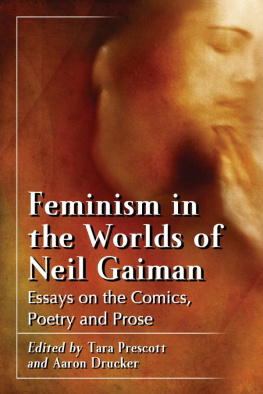
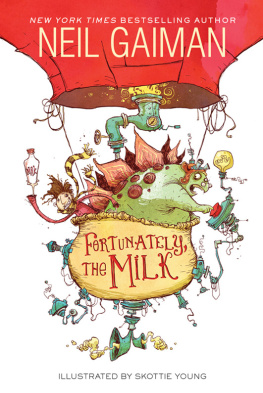
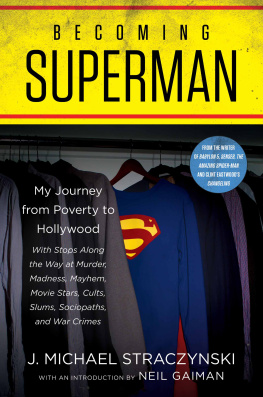


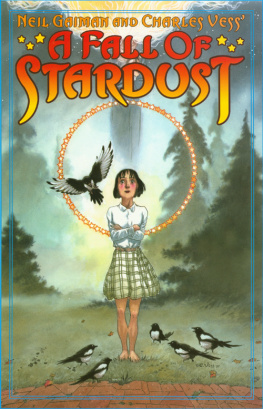
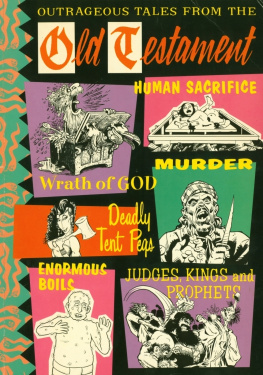

![Tara Prescott - Feminism in the Worlds of Neil Gaiman: Essays on the Comics, Poetry and Prose [N.F. - Essays, Literature]](/uploads/posts/book/159730/thumbs/tara-prescott-feminism-in-the-worlds-of-neil.jpg)
